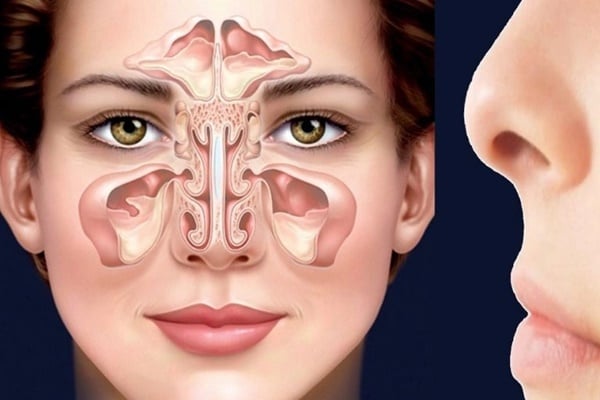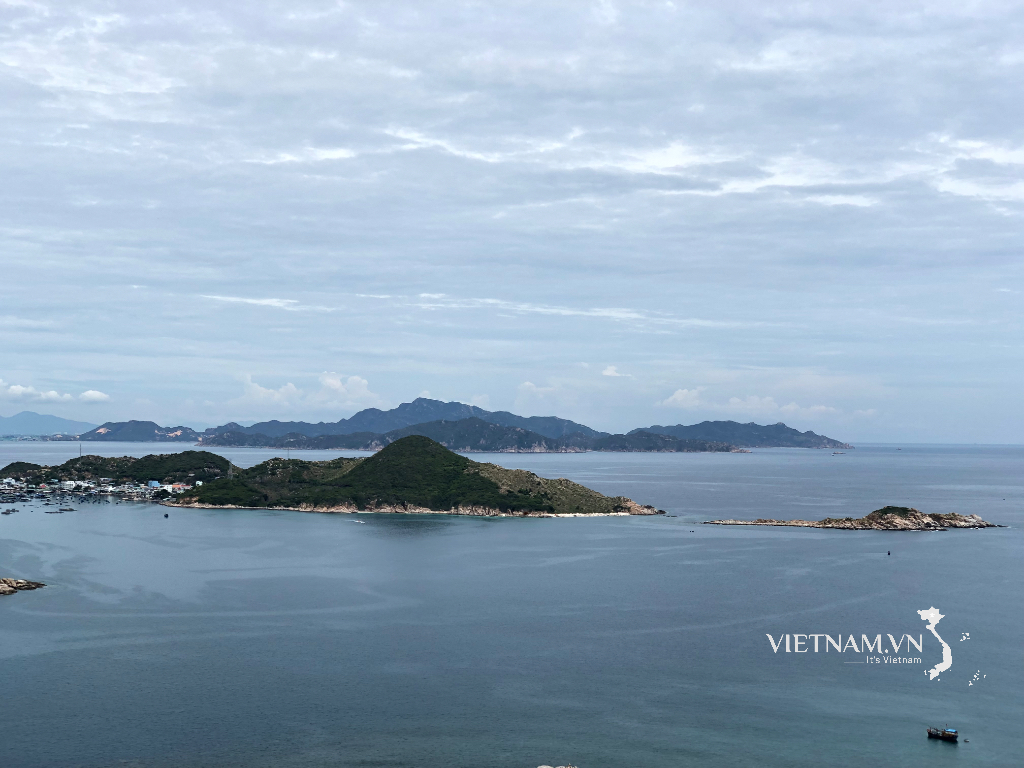Frontal sinusitis is a condition in which the lining of the frontal sinus becomes inflamed, blocking the sinus opening and causing fluid or mucus to accumulate inside the sinus.
Sinuses are hollow, air-filled cavities located behind the cheekbones and forehead. There are four types of sinuses: frontal, ethmoid, sphenoid, and maxillary sinuses. Of all types of sinusitis, frontal sinusitis is the most likely to lead to intracranial complications. These intracranial complications include encephalitis, meningitis, brain abscess, epidural inflammation, and cavernous sinus thrombosis.

Frontal sinusitis is a condition in which the lining of the frontal sinus becomes inflamed, blocking the sinus opening and causing fluid or mucus to accumulate inside the sinus.
Causes and contributing factors of frontal sinusitis
- Viruses. Sinusitis usually begins with cold symptoms, caused by viruses, which congest the nasal mucosa and block the sinus openings.
- Allergy.
- Bacteria. Streptococcus pneumoniae or Haemophilus influenzae bacteria usually reside in the nasal and throat cavities. When the body experiences health problems, these bacteria will multiply and cause illness. A common cold can eventually develop into sinusitis.
- Polyps are benign, degenerative growths of the mucous membrane that develop from the nasal or sinus lining, causing blockages in the sinus cavities, preventing nasal discharge and leading to sinusitis. These small growths can also restrict airflow, causing headaches, reduced sense of smell, or loss of smell.
- Air pollution.
- Swimming/diving in a pool. The chlorine in swimming pools can irritate the nasal mucosa, causing inflammation, leading to sinusitis and worsening existing conditions.
- Fungi. Aspergillus is a common fungus that causes sinusitis. When the immune system is weakened, the fungus has a chance to grow, especially in damp and dark environments like the sinuses.
- Overuse of nasal sprays.
- Smoking cigarettes.
- Congenital abnormalities of the nose.
Symptoms of frontal sinusitis
The most common symptom of acute frontal sinusitis is pain around the eyes or forehead. This pain is very characteristic and is described as pain above the eye sockets, and aching along both sides of the eyebrows.
Pain may occur in one or both sinuses and follow a daily cycle. When postnasal drip or expectoration is produced, the pressure inside the sinuses decreases and the pain gradually subsides.
Other signs of frontal sinusitis include:
- Runny nose
- Cough, sore throat
- Nasal congestion
- Reduced sense of smell
- Bad breath
- Mild or high fever >38.5°C
- Blurred vision
- I feel tired and have aches all over my body.

The most common symptom of acute frontal sinusitis is pain around the eyes or forehead.
Measures to reduce frontal sinusitis
- Keep your body warm when the weather turns cold. When going outside at night, early in the morning, or working outdoors in cold weather, dress warmly, paying attention to keeping your feet, hands, chest, neck, and head warm.
- Avoid contact with people showing signs of infectious diseases such as influenza, respiratory illnesses, diarrhea, measles, rubella, chickenpox, etc. Limit visits to crowded places.
- Eat a balanced and nutritious diet, including plenty of fruits to boost your body's nutrition and strengthen your immune system. Ensure a balanced intake of all nutrient groups: carbohydrates, proteins, fats, vitamins, and minerals.
- Drink warm water and avoid eating or drinking anything that has been taken directly from the refrigerator.
- Get vaccinated fully and on schedule...
- Ensure environmental hygiene, household hygiene, and keep your home warm.
- Maintain good personal hygiene, wash your hands frequently with soap, and clean your nose and throat daily with saline solution.
Dr. Nguyen Thu Anh
Source: https://giadinh.suckhoedoisong.vn/cach-don-gian-han-che-viem-xoang-tran-mua-lanh-172241106150842523.htm



![[Photo] Enchanting ancient rose garden on the mountainside in Nghe An](/_next/image?url=https%3A%2F%2Fvphoto.vietnam.vn%2Fthumb%2F1200x675%2Fvietnam%2Fresource%2FIMAGE%2F2025%2F12%2F19%2F1766109900916_vuon-hong-chin-do-thu-hut-du-khach-toi-check-in-o-ha-noi-3-20162778-1671624890024-1671624890104198100259.jpeg&w=3840&q=75)
![[Photo] General Secretary To Lam visits the exhibition space showcasing books, photo exhibitions, and achievements of digital transformation in journalism.](/_next/image?url=https%3A%2F%2Fvphoto.vietnam.vn%2Fthumb%2F1200x675%2Fvietnam%2Fresource%2FIMAGE%2F2025%2F12%2F19%2F1766110879215_1766110240024-jpg.webp&w=3840&q=75)
































































































Comment (0)